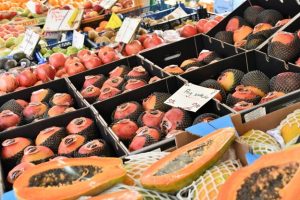Products for Business & Agriculture
Algeria’s main industries include oil and gas, energy, renewable energy, phosphate, fertilizers, and minerals. Other key sectors include information and communication technology, public works, infrastructure development, tourism, healthcare, and agriculture.
According to a business consultancy report, cereals and potatoes rank among Algeria’s top agricultural products. In 2021, the country produced around 4.3 million metric tons of potatoes and 2.2 million metric tons of wheat. Other important crops include watermelons, onions, and tomatoes.
Major Cities, Tourism, and Historical Sites
Algeria has 58 provinces, 553 districts, and 1,541 municipalities. Each administrative unit uses the name of its capital city.
Major cities include:
-
Algiers
-
Oran
-
Constantine
-
Annaba
-
Blida
-
Batna
-
Djelfa
-
Sétif
-
Sidi Bel Abbès
-
Biskra
Key historical and tourism sites include:
-
The Casbah of Algiers
-
Tipasa (Phoenician and Roman town)
-
Djémila and Timgad (Roman ruins)
-
M’Zab Valley
-
Tassili n’Ajjer mountain range (natural World Heritage Site)
Minerals and Important Products
Algeria joined OPEC in 1969. Oil and gas remain the backbone of its economy. The country produces roughly 1.1 million barrels of crude oil per day. It is also a major natural gas producer and exporter to Europe.
Hydrocarbons contribute about:
-
60% of government revenue
-
30% of GDP
-
87.7% of export earnings
Algeria ranks as the sixth-largest gas exporter in the world. It holds the tenth-largest natural gas reserves globally. According to the U.S. Energy Information Administration, Algeria had about 4.5 trillion cubic meters of proven gas reserves in 2005. It ranks 16th worldwide in oil reserves.
Finance & Economics
Algeria’s currency is the Algerian dinar (DZD). The state still dominates much of the economy due to its post-independence socialist model.
The country holds about $173 billion in foreign currency reserves. It also maintains a large hydrocarbon stabilization fund. External debt remains very low at around 2% of GDP.
However, the economy remains highly dependent on hydrocarbons. Prolonged low oil and gas prices could increase pressure on the national budget.
Industries & Industrial Goods
Algeria’s traditional industrial hubs lie around Algiers and Oran. Major industries include:
-
Cement factories
-
Chemical plants
-
Automobile assembly units
-
Food-processing plants
-
Oil refineries
-
Soap and textile factories
Other industries manufacture:
-
Bricks and tiles
-
Rolled steel
-
Farm machinery
-
Electrical supplies
-
Machine tools
-
Phosphates and sulfuric acid
-
Paper, cartons, and matches
-
Tobacco products
For more details, please contact us.
WhatsApp: +880 1713222363



